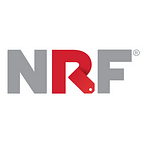Trust issues: Why consumers hesitate before hitting the ‘buy’ button
A look at the subtle — and not-so-subtle — things retailers can do to make shoppers feel more confident about buying online
Lack of consumer trust is one of the biggest hurdles for e-commerce conversion and growth. As technology evolves, trust becomes the currency for interactions beyond simply purchasing a product; innovative shopping experiences require a deeper relationship with customers.
Walmart’s “order online and pay with cash” program was designed to appeal to unbanked consumers, but showed that a huge number of customers would go out of their way to pay at a store with a credit card instead of using the same card online. What can retailers do to make shoppers feel more confident? SapientRazorfish’s Jason Goldberg shared several proven tactics:
Processing fluency
Our subconscious brains trust sites that look better, which is why retailers should follow best practices in user experience, display overt trust symbols like BBB logos or security icons and make sure contact details like phone numbers are easy to find.
Social proof
People want to follow the lead of others who are similar to them. In simpler times, that meant avoiding empty restaurants. Now consumers rely on Yelp and other review sites, making social proof more valuable than brand when it comes to influencing purchase decisions. Customer reviews on product pages are a baseline expectation, and smart retailers are finding ways to make reviews even more valuable. For example, Adorama Camera invites people who have purchased cameras and accessories to answer questions submitted by shoppers who are considering the same purchase, and Target’s Awesome Shop spotlights products that are popular on Pinterest.
Absolute value
Brand was a shortcut for quality in the past, but now we use real data. Easy access to data makes brand less important than ever. When it’s easier to evaluate the quality and value of what retailers are offering, brand loyalty becomes less important. Retailers can rise to the top by being a source for product ratings, ingredient lists and other types of product information, and providing tools that help customers make smart decisions.
Transparency
Customers now know just as much or more about products and pricing as retailers and manufacturers, so the old world’s obfuscation models don’t work anymore. There are many examples of retailers providing previously hidden information to increase transparency and earn customer trust: Meh.com displays traffic and conversion stats on its homepage, Amazon notifies customers when prices change on items in their cart and Everlane includes pricing and cost information on product pages.
But it takes more than uncluttered design and detailed product information to earn customers’ trust.
Real people, real interactions
Earning trust requires more than improving site designs and making more information available. What would it take to get you to publicly share your measurements, along with a photo of yourself in a bathing suit? ModCloth’s Mike Janover and Kara Skrip said their customers upload this information willingly, partly because of the brand’s deep understanding of its audience. The company’s models are “real” people who represent the community and aren’t Photoshopped — an unconventional policy that creates a pact and a bond with customers who might otherwise be skeptical about sharing details about themselves in product reviews.
Personalization — and other meaningful customer experience innovations — require permission.
As technology evolves, trust matters more than ever
Huge’s Emily Wengert described a not-too-distant future where e-commerce search joins forces with machine learning and natural language processing to power anticipatory retail and other innovations in customer experience. The catch? Personalization requires permission, and this type of deep relationship with customers becomes even more critical as technology evolves. Retailers need to build trust now so their brands have the ability to be part of customers’ lives in the future.
This story was originally published as part of Shop.org’s Digital Experience 2016 Playbook. Download playbooks and other free resources from the NRF Retail Library and make plans to attend Shop.org 2017 in Los Angeles this September.
